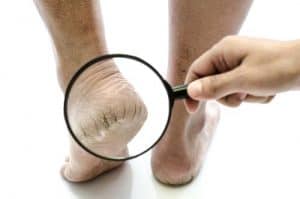 How To Treat Cracked Heels
How To Treat Cracked Heels
How to treat cracked heels is a common question at this time of year. You might have been on holidays or getting around in sandals, thongs or bare feet due to the warmer weather.
Heel cracks are something we are all prone to, but some conditions make you more likely to develop this painful problem.
· Dermatitis
· Psoriasis
· Keratoderma
· Dry skin
· Conditions like diabetes and hypothyroidism
These conditions can cause hard dry thickened skin around the edges of your heels.
We all become more likely to develop this thick skin if we are overweight, standing on hard surfaces a lot, or wearing open backed footwear like thongs and slides.
As we stand and walk or run the cushioning pad of fatty tissue under our heels will expand. The skin surrounding this fat pad needs to be both strong and flexible as it is constantly moving and stretching with every step we take.
Dry thick skin loses its flexibility so is more liable to split and crack instead of move and stretch.
Think of your skin like a healthy green leaf on a tree which is soft and flexible. Once it falls from the tree it becomes dry and brittle and will crack or crumble when you try and bend it.
The first signs will be small splits on the surface of the heels. If left untreated these weak points in the skin will deepen and become painful to stand on. In severe cases they can bleed and become prone to infection then you should seek professional help for any foot wound.
Book NowPreventing Cracked Heels
Firstly you should seek medical advice if you have any of the conditions listed above, and ensure they are managed optimally.
Looking after the thick skin will involve regular moisturising, preferably with a product designed specifically for dry cracked heels. This is likely to contain ingredients like Urea, Lactic Acid, or Salicylic Acid. These should be used in conjunction with a pumice stone or foot file to remove excess hard skin by gently rubbing over the area. It is safer to avoid using implements that resemble graters or contain blades.
Use dressings and antiseptic if cracks are deep or painful to help prevent infection. People with diabetes should be especially careful of foot wounds and seek professional advice without delay.
If home management does not improve your heels after 2 weeks then it is time to get professional help.
This could involve
· Revoval of the hard skin by a podiatrist using a sterile surgical blade
· Strapping the area to protect the skin
· The use of heel cups or gel pads to assist with shock absorption
· Using products to hold the edges of cracks together allowing them to heal.
Podiatrists are the best people to deal with all kinds of foot problems, and can advise you on the best treatments available for cracked heels or dry skin.
Book Now